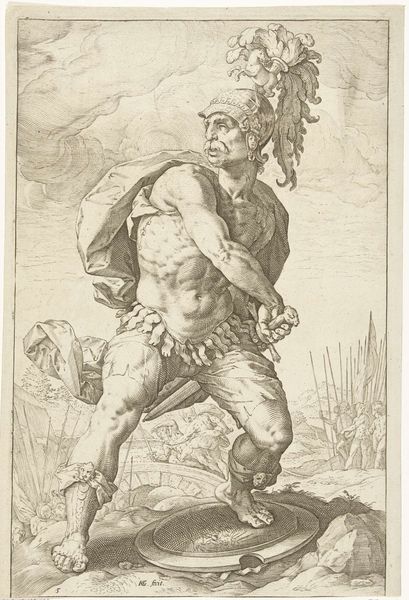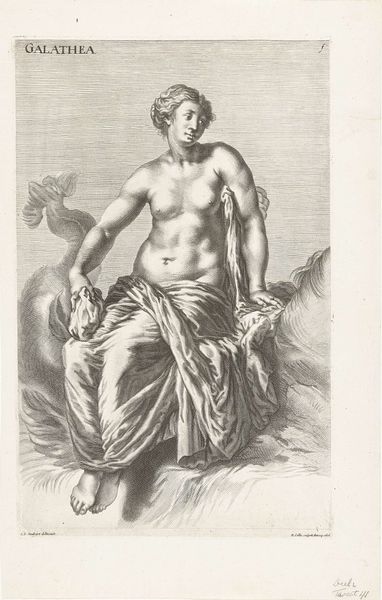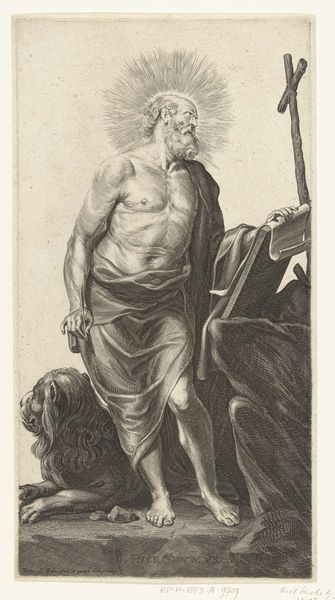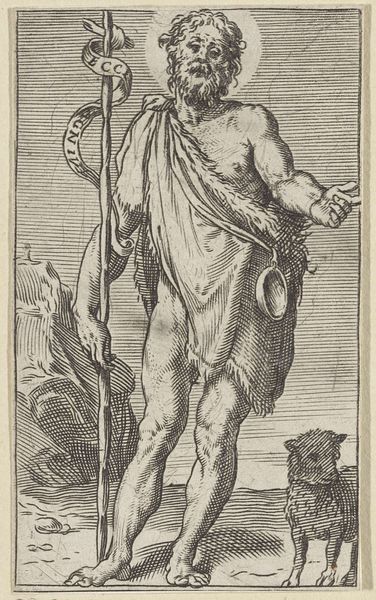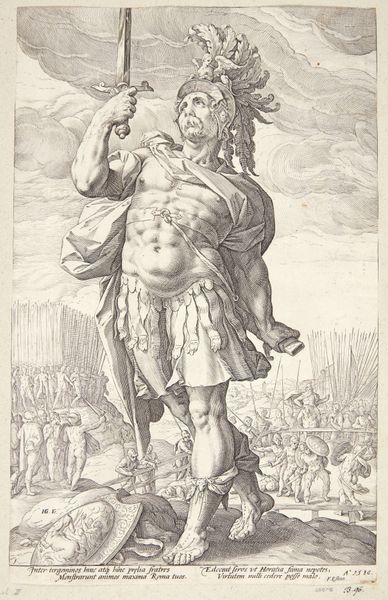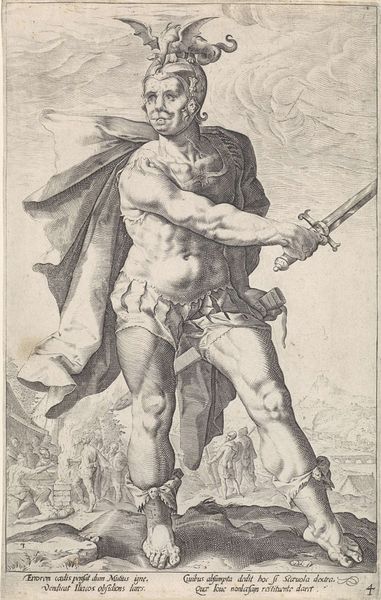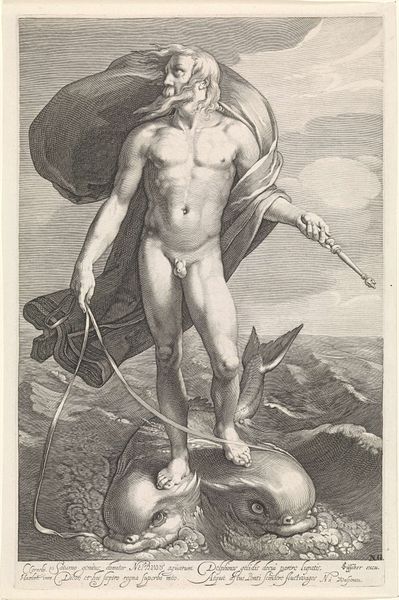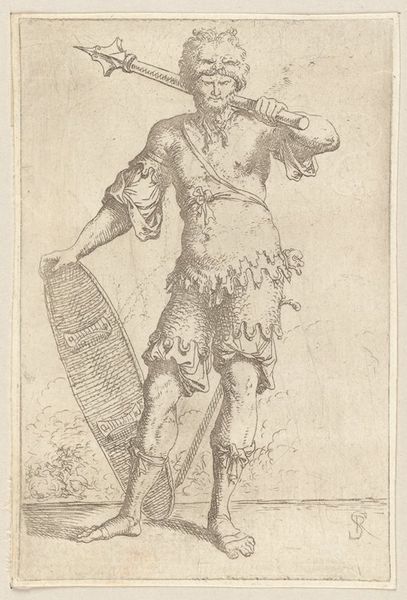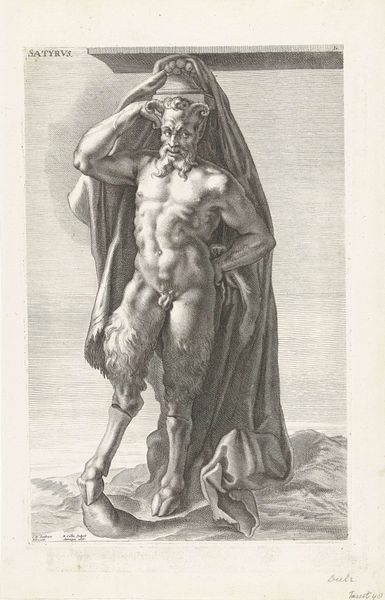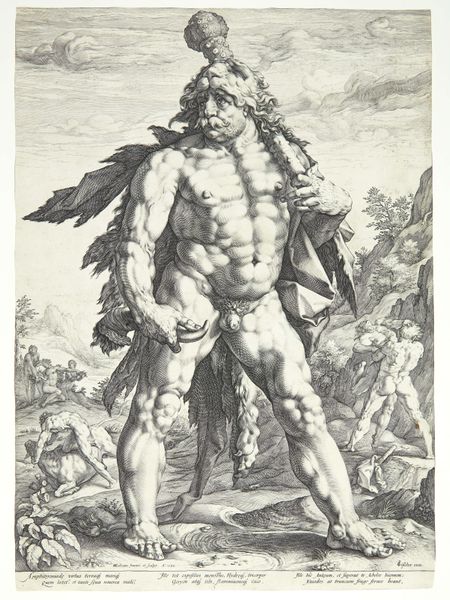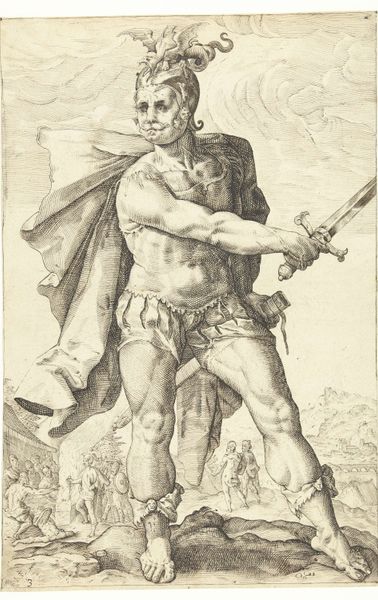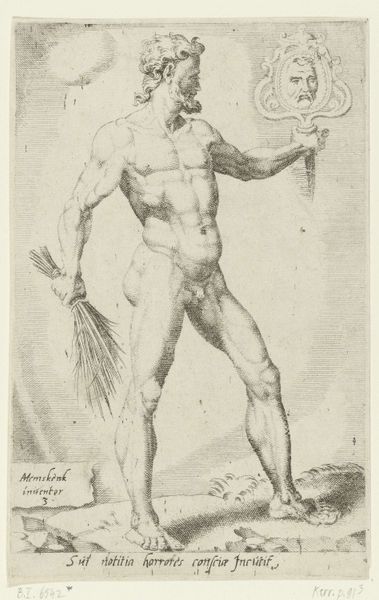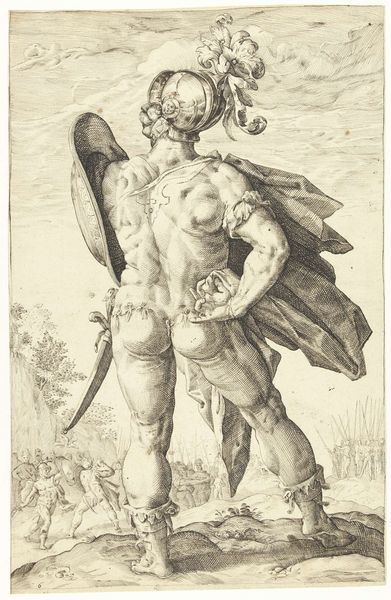
Dimensions: height 180 mm, width 103 mm
Copyright: Rijks Museum: Open Domain
Editor: This engraving, "Amerika" by Bernard Picart, dates back to 1709. It depicts a figure representing America standing on what looks like a crocodile. I find it strange that it mixes classical allegorical style with this… well, a crocodile! How should we interpret this combination? Curator: Indeed! We see a Neoclassical interpretation, aligning with the tastes of the period, yet the symbolism tells us much about how Europe viewed the Americas. Ask yourself: what does the "America" figure look like, and what elements stand out? Editor: Well, she's semi-nude, wears a feather headdress, carries a bow and quiver, and stands with one foot on a crocodile. Is that a common way to portray conquered lands at this time? Curator: The figure adopts classical contrapposto, projecting "America" as strong and noble, yet also 'exotic' in their presentation – note the headdress and the lack of full clothing. The crocodile isn't just an animal; it symbolizes the untamed, ‘savage’ New World, subjugated beneath Europe's vision of order. It served to underscore a Eurocentric view of colonial power and the presumed need to 'civilize'. Editor: So, it's not just a neutral portrait but a statement about power dynamics and colonial ideology at the time. The artist creates a political symbol about what the artist thought of America as a territory, and more specifically as a group of people. I guess that explains why I feel unsettled when I see it. Curator: Precisely. Art doesn't exist in a vacuum. It reflects the society that produces it and often reinforces existing power structures. Considering that Picart made other similar allegorical figures representing different continents with similar symbolism, is it not worth wondering what effect this imagery may have had in its day? Editor: That’s a very interesting and somewhat disturbing lens through which to understand it. I’ll certainly look at art like this more critically from now on.
Comments
No comments
Be the first to comment and join the conversation on the ultimate creative platform.
